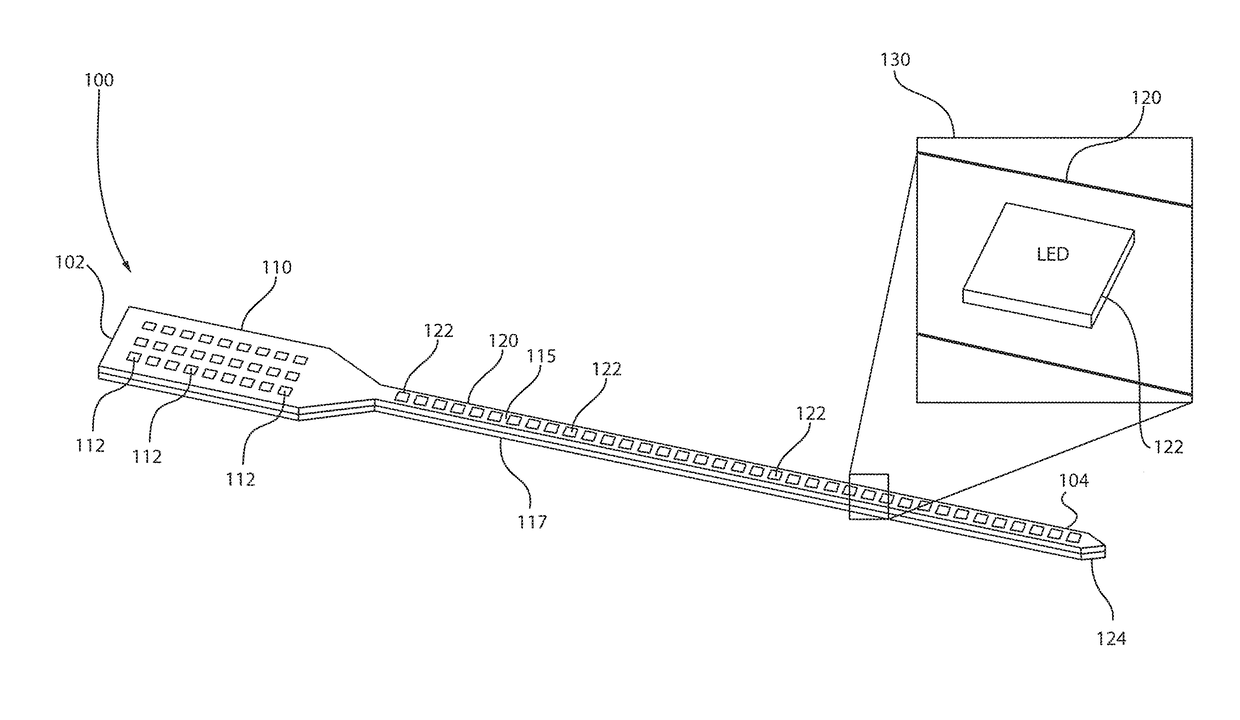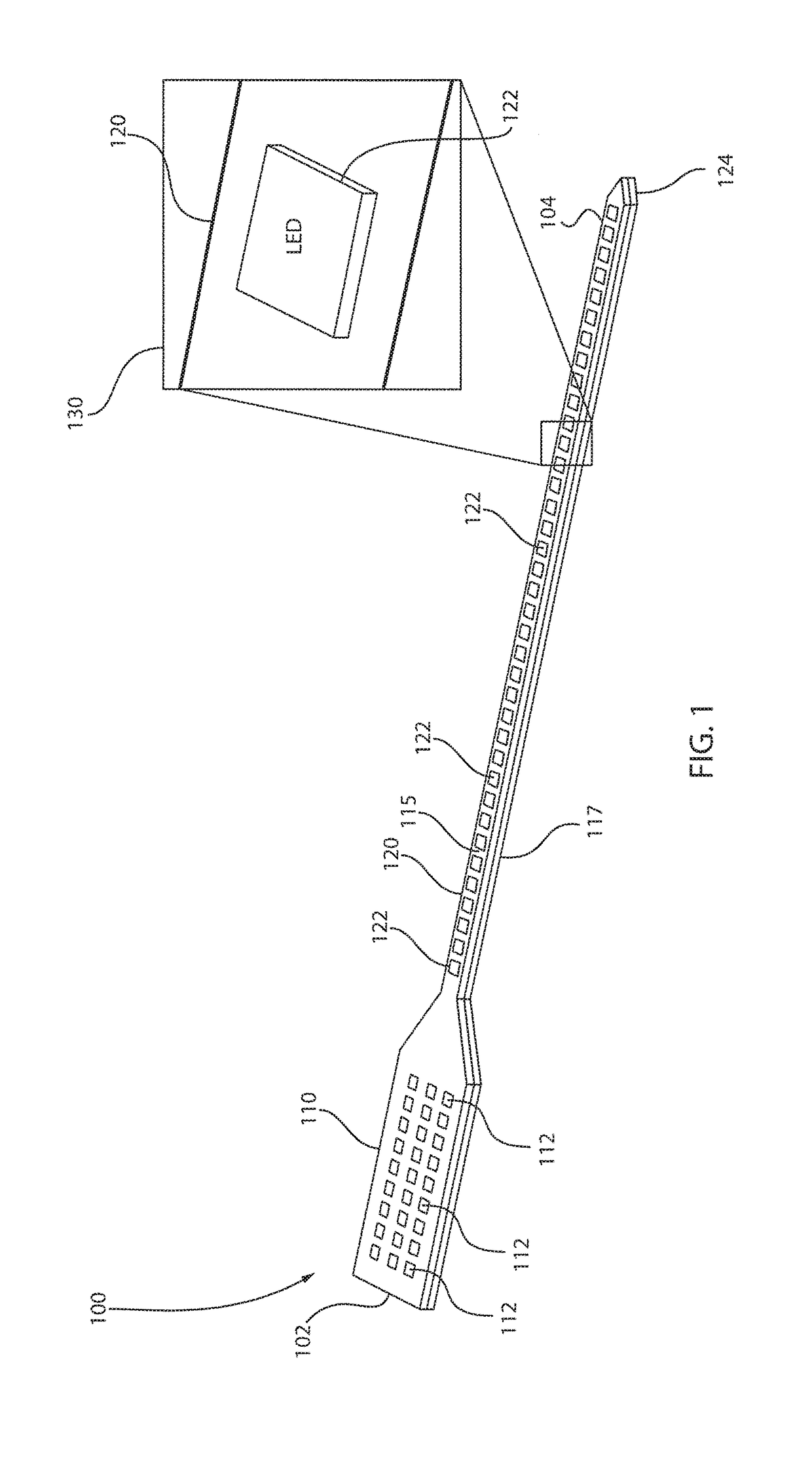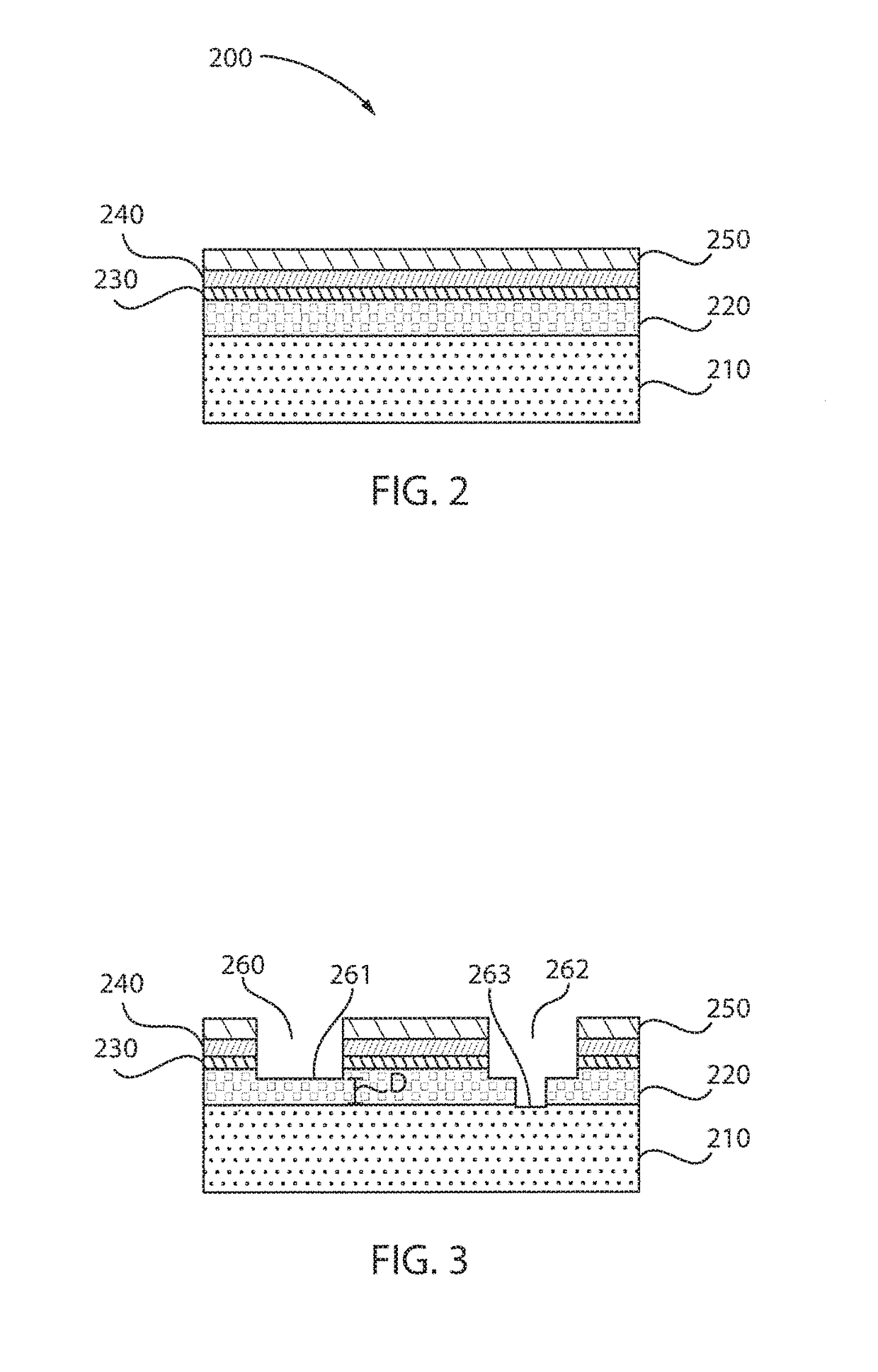Probe for localized neural optogenetics stimulation and neurochemistry recordings
a localized neural and optogenetics technology, applied in the field of optogenetics, can solve problems such as damage to neurons
- Summary
- Abstract
- Description
- Claims
- Application Information
AI Technical Summary
Benefits of technology
Problems solved by technology
Method used
Image
Examples
first embodiment
[0102]In a first embodiment, a carbon electrode sensor structure 400 includes a titanium (Ti) or nickel (Ni) layer 410 that is formed over the substrate 405. The substrate 405 can be, e.g., a Si substrate. Segmentation channels 425 are formed such that portions of the substrate 405 are exposed. A vertically aligned CNT or CNF layer 420 is grown over portions of the layers 410 (Ti or Ni). If Ti is used, the Ti layer 410 can have a thickness of about 200 nm. If Ni is used, the Ni layer 410 can have a thickness of about 20 nm. One skilled in the art can contemplate using other types of materials, such as, but not limited to TiN or Ni45Fe55. If TiN is used, the TiN layer 410 can have a thickness of about 200 nm. If Ni45Fe55 is used, the Ni45Fe55 layer 410 can have a thickness of about 20 nm.
second embodiment
[0103]In a second embodiment, a carbon electrode sensor structure 400 includes a titanium (Ti) or gold (Au) layer 410 that is formed over the substrate 405. In this example embodiment, a vertically aligned CNF layer 420 is grown. After deposition of the layer 420, a negative photoresist (not shown) is applied thereto via, e.g., spinning. The negative photoresist can be, e.g., SU-8. Negative refers to a photoresist whereby the parts exposed to UV become cross-linked, while the remainder of the film remains soluble and can be washed away during development. Subsequently, segmentation channels are formed and polystyrene beads are applied on the photoresist. The beads can be, e.g., 1 μm in thickness. Next, a plasma etch can take place, as well as ultrasonification to remove the beads. The CNF layer 420 is then pyrolyzed. Pyrolization can be performed at, e.g., 900° C.
[0104]If Ti is used, the Ti layer 410 can have a thickness of about 200 nm. If Au is used, the Au layer 410 can have a th...
PUM
 Login to View More
Login to View More Abstract
Description
Claims
Application Information
 Login to View More
Login to View More - R&D
- Intellectual Property
- Life Sciences
- Materials
- Tech Scout
- Unparalleled Data Quality
- Higher Quality Content
- 60% Fewer Hallucinations
Browse by: Latest US Patents, China's latest patents, Technical Efficacy Thesaurus, Application Domain, Technology Topic, Popular Technical Reports.
© 2025 PatSnap. All rights reserved.Legal|Privacy policy|Modern Slavery Act Transparency Statement|Sitemap|About US| Contact US: help@patsnap.com



